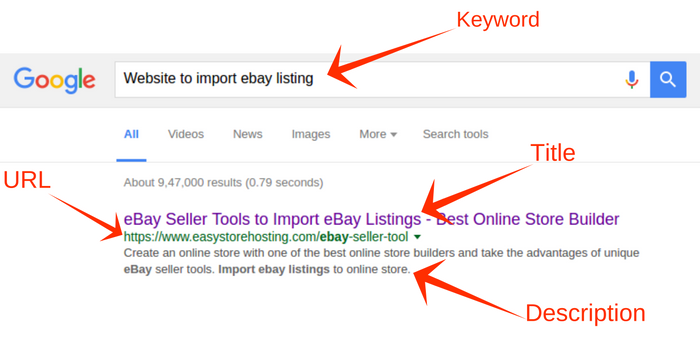On Page SEO Explained: Get On top in search results with Google Snippets
So the story starts from 2009 when Google decided to add rich snippets to their search results. The aim was to make the information available on each website before people would actually click through the website. The goal was to give a quick look to the users, what they'll find once they enter the website, this solved two purposes:
- It helped the users in choosing the right website: making them spend lesser time on searches, helping them find the one that contains the exact information and saving their time and data.
- Secondly, the website owners did not face unnecessary traffic. The user reached the right website deferring the unwanted traffic
Now when we look at the snippet concept, its type of a visual marketing technique and nowadays the snippets contain images and videos too. They provide eye-catching information for which a user will definitely head towards, due to its lucrative nature.
How can we use snippets?
Snippets provide useful information for people searching Google and help websites attract the right kind of traffic; let’s see how they can be used:
Including video
With a video, you tell Google about the video on your site and give details so it can be displayed more information about the video. They improve click-through rates and also make your snippet stand out, amongst of all the boring search results. How wonderful it would be if you're the one that looks different and user ultimately tries to see what you have to offer.
Adding a picture
Well, if you are an author or content writer and you show your readers who you are and what you look like, in which your website snippet can help and displays your image. It can help your branding and also increase the click through rates. Below the picture details about that particular author can be added making it easier for the users to recognize the writer and know about his work.
Adding Reviews and rating
Whether you are selling a product or writing a blog, adding rating and reviews in your snippets will only do you good. When the users see a good rating they automatically build a sort of trust! Rating and reviews help gain click through and make your snippets stand out. If you do have reviews on your site it’s really essential to add in rich snippets so they can be visible in search results. It can be added manually or depending on how your website is developed there may also be a plug-in which you can add support for this.
One thing is for sure, that the eye is drawn to search listings that look different. With the advent of the Internet, there are thousands of websites to choose from. How do you leave your mark? How do you make a difference? The answer for this is focused keywords and metadata; the kind of impact that these can bring is tremendous. First, let’s understand what they mean.
When used effectively and smartly metadata can have a great impact on page ranking. A compelling title and description can increase the clicks on your web page; missing or incomplete metadata can prevent pages from ranking. Creating unique titles and for all pages is important and before you get lost in all the terminology I will describe exactly what they mean.
In context to web pages, Metadata and Meta tags refer to the title and description of a web page that is encoded but not actually displayed on the screen. The real consumer of this invisible data and HTML code are the search engines. As this data gives important information to search engines about the content and purpose of the web page.
And in a context of what is visible to us, Metadata determines what a search engine displays when your page turns up in the search engine's results page after a user performs a search.
Let’s look at the Main Elements of Web Page Metadata:
Title
This element is also referred to as the SEO Title; it shows up as an underlined blue link on the search engine results page (SERP) with the search phrase bolded. The page Title is considered significant element on the page for informing the search engines like what the page is containing and which keywords to focus on. Titles are 70 characters or less including spaces. It’s advisable to have a unique Title and Description for every page.
Meta Description
It is approx. 160 characters, which include spaces; it comes under the Title and the page URL. Meta description provides more information, describing what a visitor expects on the web page. The more accurate and informative a description is, the more chances that someone will click and visit the web page. There should be a different description for every page.
If the search engine does not find a Description used for a web page, then the search engine will attempt to use a logical content it finds on the page, usually from the beginning of the page.
Meta Keywords
This Meta tag has diminished in importance to the point that it is hardly used anymore. Usually, search engines ignore the tag. It is important not to mix up Meta tag with the on-page keywords that are used as the text and are significant, visible part of the webpage.
Now moving on to focused keywords as the name suggests, keywords are meaningful and they strongly relate to the topic you are talking about. Picking keywords that are short highly focused, valuable, helpful, relevant, quality content, this is achieved when your content is written focused on that keyword.
e.g for an IT company providing support services, the keywords could be “Technical support services”
Given below are the ways you can use it, once the keyword is defined:
- In the URL for the page
- In your page title
- In your page description
- In your main page headline and if possible in at least one sub-headline
- In an on-topic, optimized image
- In your page or post content, with it bolded
- In an optimized link
Using your focus keyword in the places listed above is awesome if it naturally works well. But you have to be careful and don’t need to overdo it! If your keyword doesn’t work well or if it sounds odd in one of the places listed above, don’t force it.
Now hopefully you get everything one need to know about Meta tags, keywords, etc. With all this information one need to know, how they can write a genuine but attractive meta tags as well, which are described as below:
How to write effective Title and description?
These are most important and useful feature for improving click through rate. They are also the first interaction of a user with your website, almost like a first impression, then why wouldn’t anyone work hard to make them look great! Below are few tips for writing a good title and description:
Short and sweet!
Make your title and description of appropriate length, Google will typically display the first 70 characters of a title, if it’s too long Google will truncate it, and the ideal length for the description should be between 150-160 characters.
If one will follow as written then, I don’t think any other can be more expert than you will be.






